| RACING HISTORY |
YEAR: 2012
FEATURE RACE COMMENT
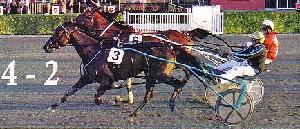 |
Round six in the epic Bettor Cover Lover - Carabella title fight went to the latter at Addington last Friday night and the score is now 4-2, but the points are still about even and the big rounds are still to come.
Carabella was at her brilliant best in the $40,000 Premier Mares Championship, but Bettor Cover Lover lost no admirers in closing to within a head in what was essentially a match race. She probably gained some in getting so close after Carabella had things all her own way. Among those admirers are the connections of Carabella, who were far from confident going in. Still bemused by how Bettor Cover Lover could pick them up at Auckland last month, and suitably impressed by a stunning trial by their arch rival on the Monday, the connections figured Carabella to be vulnerable.
"We didn't have much choice about leading tonight and we knew Bettor Cover Lover would be coming," said trainer Benny Hill. "Carabella has had this habit of knocking off when clear in the run home, and we talked about that before the race. Ricky (May) managed to get her home this time, but it was a little too close for comfort and it's quite a battle isn't it," he added. Easing up when the work seems to be done almost cost Carabella at the Jewels last year and it may well have been a factor in Auckland, such was Bettor Cover Lover's late rush, but May made sure he kept Carabella's mind on the job at Addington.
After getting a relatively easy time of it, May had Carabella stoked up down the back and with Storm Light struggling to stay in touch coming to the turn, Carabella managed to put a winning break on Bettor Cover Lover early in the run home. Carabella paced home in 56.1 with even quarters in 28.2 and 27.9. Bettor Cover Lover was spotting her a decent lead a lap out and while she got handier at the half, having to get around the game Storm Light made the difference in the end.
Hill, May and Robert Famularo know that each encounter is going to be a battle of tactics and wits, and they respect Bettor Cover Lover as much as anyone. But they have another card to play when needed. "What we do in the future will be dictated by the barrier draws, but I can't wait for the day when we have to drive Carabella from behind. When that happens, we've seen what she can do in the Oaks. She's a better horse when chasing, than being chased."
Carabella is being very carefully managed as a 4-year-old and is in for a very light season. She may even be kept for just racing against mares through next season as well. Her connections are just worried about next week's race for the moment, but a trip to Sydney for the $200,000 Ladyship Mile at Menangle on March 3 is definitely on the programme. Carabella will then come home and be set for the Jewels at Cambridge, although Famularo is not overjoyed about that prospect. "Everybody is on a hiding to nothing there," said Famularo. "You can head there and draw barrier one and it is race over. Or you can draw six and your race is over," he added.
There's a couple of good races for Carabella at Melton in May, although the $100,000 Queen Of The Pacific is only a week out from the Jewels, and Hill might prefer a lead up race to Cambridge in Auckland when the time comes. Whatever is decided, Carabella will have no more than 7-8 races this season, and Famularo for one will be quite happy to follow the same sort of programme next year as well. "If you pick you spots, you can still win some serious money, without taking on the big boys," he said. "$200,000 Australian is serious money for instance. Most of the present top open class horses are getting a bit long in the tooth now and won't be around in a year or two, although there seems to be plenty of depth coming through. We'll just have to assess things at the time, but we won't be rushing into the (NZ) Cup or the Grand Circuit just because she turns five. There is plenty of time for that carry on."
In the meantime, the fans have another mouth watering clash with Bettor Cover Lover in the NZ Breeder's Stakes to look forward to next week, followed by the Ladyship, where De Lovely could also be a factor. With so much doom and gloom surrounding the industry at present, at least the horses are providing something to look forward to.
Credit: Frank Marrion writing in HRWeekly 25 Jan 2012
YEAR: 2011
FACILITIES
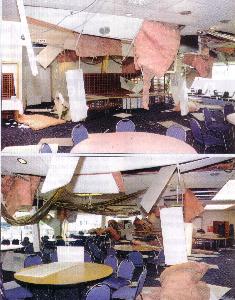 |
As this issue of the 'Weekly' was busy winging its way around the countryside to land in your mailboxes, members of the Inter-Dominion Events Committee were holding a telephone conference to discuss the staging of this month's Championships. And it's pretty much a 'given' that they will not be run in Canterbury, either at Addington or Ashurton, and will thus move to Auckland.
Like many areas of Christchurch, Addington Raceway did not escape the wrath of last week's devasting 6.3 magnitude earthquake. Earlier this week, Addington Raceway's CEO Shane Gloury said these damages were "the least of my worries" as paramount discussions over the staging of the Inter-Dominions continued.
"Overall the Raceway came through the earthquake not too bad," Gloury said. "The damage is similar to last time (September 4 earthquake) but more extensive, and it's only really the top floor of the main stand that got hit. The track suffered some damage, with hairline cracks, but it was fairly minor."
Racemeetings scheduled for tomorrow night (Thursday) and Sunday could not proceed and were transferred to Rangiora. "There's issues with the glass windows on Level Three plus the structural integrity of the public stand, because the Structural Engineer still hasn't given us the 'all-clear' yet," Gloury said on Monday.
In the bigger picture though, the damages to Addington Raceway were quickly fixable and not the reason why it simply wouldn't be right to hold this season's Inter-Dominions there. Obviously the likely shift to Auckland has serious ramifications for the numerous sponsors involved, who will struggle to get any 'local' value out of the money they've put up so far, not to mention the virtual nightmare of all horses, owners and attendees having to alter travel plans to the other end of the country.
Gloury said there's the argument that the Series is not for another few weeks, and by then Christchurch will be in need of an event like this to lift spirits and morale - but acknowledged that on the other hand, would carry on and running it be in Christchurch's best interests, given the likely drain on resources of the city and the state of essential services which might not be anywhere near back to normal by then.
Credit: John Robinson writing in HR Weekly 2March 2011
YEAR: 2011
SECRETARIES & EXECUTIVE STAFF
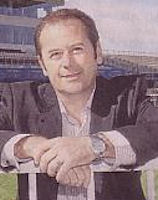 |
Dean McKenzie is not sure how long he will be at his latest racing posting as Chief Executive at Addington Raceway but he can be supremely confident it will be longer than the first position he held in racing, at the Avondale Jockey Club in 1989.
"I was in accountancy in Invercargill when I applied for a position there in the late 1980s when night racing was being held there. I packed everything I owned into my Mazda 323 and off I went. I had been there a week or so and the boss called me in to tell me the bank was fore-closing the club and it looked like it was all over." In fact McKenzie stayed longer at the behest of the Racing Board and then it was back to Invercargill and a fresh start as general manager of Southland Racing. A member of a prominent Southland sporting and racing family, McKenzie was never in much doubt about what he wanted to do. "I applied for the Riverton Racing Club Secretaryship when I was 21 and got down to the last two. Doug Stuart got the job but they asked me to become a Steward of the club instead so I felt I had offered something."
McKenzie's big break in racing administration came in 1994 when Wellington Racing Club Chief Executive, John Cameron offered him an accountancy position with the club. When Cameron moved to Australia a year later, McKenzie stepped up to the role. "I was there just over four years. I learned a lot and enjoyed the experience."
However McKenzie was always looking to the future. He moved to the United States after being accepted for a year-long Masters Degree in Sports Administration and Facility Management at Ohio University in Athens. The course covered all sports but McKenzie got to see a lot of big race meetings there, including the harness racing icon event the Little Brown Jug and racing at the Red Mile. "My costs had partly been met by the Racing Board. Rick Bettle was the Chief Executive then and for the next two years I did contract work for the Board," McKenzie recalled. "A lot of things went down in that era. Few people remember now but we broadcast our racing into the United States 10 years ago. We introduced the newspaper form which has become the norm now, Radio Trackside came on stream. Things were moving."
McKenzie's move to Christchurch came when putting his sport administrative learning curve into action as Chief Executive of Jade Stadium Ltd. He managed the former Lancaster Park complex for about four years. "It was a major challenge no doubt about that, but I had great staff and a Board to help me. We had some huge promotions. The Lions test of 2005 was one of the biggest sporting events we had had in Christchurch and we also branched into entertainment. Meat Loaf had a big concert there, the Tigers came over to play the Warriors. It had the same core attributes from an organisational viewpoint as the biggest racedays but with extras and the devil was in the detail. I think a lot of people forget that about the size of New Zealand Cup days and the like. The skillset is the same and the planning is so much greater than anyone can appreciate. There was probably greater security at Jade and that was the pressure."
McKenzie's next move in 2006 as Jade reorganised was joining Estorest, a sports management company he had already an interest in as a partner. The company was founded by Bruce Sharrock and Craig Innes as professional sports gained momentum and professional sportsmen needed agents. "They were based largely in the north and were looking for a Canterbury presence and I wanted to live in Christchurch. My parents had moved here by then and my two sons were well established at schools here.
McKenzie had built up a relationship with the Sharrock family of Waitara during his time at Avondale. "I used to go down to the Taranaki to boost entries. We were getting more support from down there than locally. Bob Sharrock (Bruce's father) was a great supporter and I had some great times down there. The business association grew out of that." The good times included racing the highly successful racehorse Go Thenaki trained by Allan Sharrok.
Now McKenzie faces a different sort of challenge and he is playing a dead bat to any speculation on what it might bring until his innings is established.
Might Addington Raceway have to face a move in the medium term? "The truth is nobody is sure just what is going to happen here in the next few years. But Addington as an area is going to do well and to me that means the present track will expose harness racing to a greater audience. I want to make the most of that."
What will replace the public stand? "There are a lot of decisions to be made. I think it is pretty obvious we are not going to see another big stand but what form any replacement will take I can't say because nothing is decided."
The earthquake has been a boon for Addington? "As I said, Addington has done well generally. The proceeds from the stand insurance will help our situation. Our Twiggers stand is fully occupied as business premises and our business park is booming with more plans in mind. There are winners and losers in any situation like this but there are challenges for us too."
What about that four-year cycle among jobs. A pattern he intends to follow? "My view is that if you haven't done something after four years you are probably not going to do it. But that doesn't mean you can't go on doing it. I know a lot of top administrators who have been in the job a long time and still do a great job. Tim Mills at Riccarton, for example."
How about the change of code? I have had a few pacers in my time but not with much success. But I have been a keen punter and a regular at Addington. One thing I can say is that I know the place well from a customer point of view and that is a starting point."
The new position does come at some personal and professional cost. McKenzie was this year appointed to an executive position on the Board of New Zealand Thoroughbred Racing, and had been keen to retain that position but the pospect caused consternation in some circles. There is nothing in the rules which stopped him from carrying on but he decided at the weekend to resign.
Credit: David McCarthy writing in The Press 26 Nov 2011
YEAR: 2011
CARETAKERS
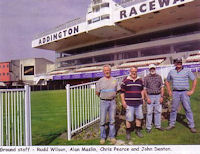 |
Ask Joh Denton how long he has been track manager at Addington Raceway and he will tell you he began the year Bee Bee Cee won the New Zealand Cup. That was 1994. In between there have been many special Addington memories for Denton including Kym's Girl, who was trained by Colin and Julie De Filippi, John's sister, and driven by Colin, winning the New Zealand Cup in 2001.
Christian Cullen's 1998 NZ Cup win was also special because his driver, Danny Campbell, had his first job in a stable working for Denton, a former licenced trainer and driver who is the son of highly respected elder statesman of harness racing in Canterbury, Bill Denton. There have also been exciting times watching other stars such as Courage Under Fire, Lyell Creek, Elsu and Monkey King fly around Addington.
Managing the grounds of such a large and complex facility is a big job. However, Denton is also Track and Venue Inspector for every harness racing track in New Zealand which means a lot of travelling for him. He loves his job and says he is lucky to have such dedicated staff working with him at Addington including Rudd Wilson, Allan Maslin and Chris Pearce. Denton's son, Jeff, also helps out at the races assisting with track work. "We work as a team to make sure everything looks spic and span," Denton said. "This is our life."
Addington CEO Shane Gloury said Denton and his ground staff team were great to work with and he was "very pleased with the results they have achieved. They are hard working and take tremendous pride in their work and the grounds here at Addington." he said. Denton said the men in his team were also experienced horsemen which was a big advantage at the races, especially if there was an accident because it meant they were able to help the crash crew when necessary.
The sense of pride they all have in their work is on show at every Addington race meeting but never more so than during the New Zealand Cup carnival. Every year at this time Denton and his team work especially hard to make sure Addington is looking her absolute best for New Zealand's premier harness racing event.
However, this year even more effort has been required after 12 months of turmoil, caused by three devastating earthquakes and thousands of smaller quakes, and aftershocks, ripped the heart out of Christchurch, flattening much of the CBD, causing horrific damage as well elsewhere in Canterbury and leaving 182 people dead after the February 22 quake.
Addington Raceway escaped with only minor damage after the first earthquake on September 4 last year, and even became a refuge centre for some time for many people with badly damaged homes. However, far worse damage was to come during the later quakes resulting in the much awaited Addington Inter-Dominions having to be transferred to Auckland in March, a severe blow to the South Island harness racing community and the Christchurch economy.
Gloury said that after the February 22 earthquake, seven race meetings, including three Inter-Dominion fixtures, were either abandoned or transferred to other venues. This was because of damage to buildings, and the track, including hairline cracks, liquefaction, and gouging after the main water pipeline cracked three times. The in August another two meetings had to be abandoned due to heavy snow. The public grandstand has also had to be demolished, after being damaged beyond repair, and has been replaced with marquees and portable seating for Cup Day. The February 22 quake was "pretty frightening for everyone," Denton said, "but fortunately nobody was hurt at the raceway". He was on the tractor watering the track that day when the quake struck. "I looked over at the main stand and could see the windows moving."
Although Denton had a long list of things still to do before Cup Day when I visited last week, there was no signs of pressure and he was looking forward to the big day. "I believe it will be a great Cup and people will really enjoy the week out. The Cup field itself is looking exciting, particularly with Smoken Up now coming and Auckland Reactor back." The big, roomy Addington track was "one of the fairest" in New Zealand, Denton said. "You can be anywhere in the field and still have a winning chance."
Gloury said he was hoping for around 24,000 racegoers on Cup Day. "While we expect that number, visitors from the North Island and Australia may be down due to concerns over the earthquakes in Christchurch, with so many events lost from Canterbury we expect Cantabrians to get right behind Cup Day which will be the biggest event in Christchurch in 2011," he said.
While earthquakes, aftershocks and heavy snow have provided trying times for everyone in Canterbury during the last twelve months, the popularity of the Addington Raceway Events Centre is proving a silver lining in the dark eathquake clouds that have hammered the region. Now the New Zealand Cup Carnival, something everyone looks forward to in harness racing, is almost here again. A big thanks to all the hardworking team at Addington Raceway for making it happen.
Credit: Shelley Caldwell writing in HRWeekly 3 Nov 2011
YEAR: 2011
PEOPLE
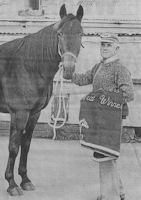 |
| Jack with Yankee Loch |
Old habits die hard in the harness racing game so it is just as well that age is no barrier to success.
Ask former top trainer Jack Carmichael, of Templeton. He recently renewed his licence 71 years after he first went racing and soon revealed that old skills also die hard, producing his own Flaming Frieda, driven by Ian Cameron, to win at Timaru.
"It was just circumstances, really," says the modest veteran of well over 700 wins. "I retired a few years ago (2005) and handed in my licence so I wouldn't be tempted to take on a horse. I didn't believe in just going on for the sake of it. I was going to breed from a mare I had, Frieda Holmes, and sell the foals as yearlings." He first foal fetched $9000 and the next one $20,000. Then "Hoagy" as he is widely known (after the composer of the famous song Stardust) was unhappy with the $9000 offered for the third foal, Flaming Frieda, and took her home.
"I had her here and was working her along and, well, with the cost of training fees today I thought I might as well do it all myself. I was getting up at the same time and pottering around with them anyway. I never changed my routine really, everything was here and I didn't think I had forgotten how."
Carmichael's career is steeped in trotting tradition. He began by riding in saddle races on the West Coast in 1940, including the noted saddle pacer, Mankind, a minor legend of the era. Jack drove his first winner, Dawn Grattan, at Hokitika in 1942. "I was related to Wes Butt (whose property was known as Mankind Lodge) who had a big team then and worked with him. I was in the army at the time. We were sleeping under the public stand at Riccarton and training there. I managed to get weekend leave to go over and drive and it was hard to get in those days." Those were the days when it took 12 hours for the average equine rail trip to the West Coast, after which horses campaigned there for weeks at a time, giving rise to the quip "trained on the train". "You certainly didn't do much with them between races. They often raced twice on the same day and with the travelling that was about it."
Carmichael went on to star in much bigger arenas. He trained and drove the 1973 New Zealand Cup winner Globe Bay for Christchurch garage proprietor Stan Wheatley, who bought his dam after her half-sister, which he owned, was "nobbled" at a Hutt Park meeting. Coronet Lass started Jack off in the training ranks after years of working with Butt and farming. Chequer Board, Glen Moira, the erratic but brilliant Micron, and Astralight were among his many stars, but his record in Inter-Dominion trotting finals with Precocious(1975) and Yankee Loch(1989) were special highlights.
The aptly named Precocious had an unusual career. When she was a two-year-old, an unnamed colt jumped the fence and put her in foal. The resulting filly, appropriately named Over Fence, was not only a good winner but later left a high class trotter in Precocious Lad. "I only trained Precocious at odd times. Bob Mitchell had her at the 1973 Inter-Dominion and I went over to drive her. We were off the back mark and it wasn't going to be easy. An old bloke there took me aside and told me the locals would make things tough for me in the final but I should remember that stewards might give me a 'holiday' but they wouldn't take the race off me. Sure enough, one driver in particular tried to push me off the track for a whole round. I gave as good as I got, remembering that advice, and won the race. There was a long enquiry but the old bloke was right. They gave me a month's suspension but we kept the race. The other driver, Bert Alley, became a good mate of mine."
It was experience against the tough Australian drivers which paved the way for the second Inter-Dominion triumph with Yankee Loch in 1989, also held across the Tasman. "I had a good mare called Kate's Return. She frustrated me until I found out she loved going to the front. When I went over to Australia they just attacked me all the way and ruined her chance. So when Yankee Loch's turn came and I knew he would race best in front, I rang an Australian driver, Jim O'Sullivan, who had won big races at Addington at that time and asked him to drive him in the series. Jim went to the front and they didn't attack him like they would have if it had been a Kiwi driver. Yankee Loch beat the hot favourite, True Roman."
Jim Curtin drove Yankee Loch in New Zealand to win several major races. But Ian Cameron is the "stable driver" at the moment. "When you go to the trials, fellows like Jim are either away at the races or booked up. Ian has always driven quite well in my opinion and he helped me out when I went to workouts. He's done nothing wrong."
Jack bears no grudges against Australians, incidentally. His wife, Dorothy, comes from there and they have had a long and successful marriage. Besides his work with horses, Jack put in years of administration with the Owners and Trainers Association running trial meetings at Addington. He is one of the select few elected to Addington's Hall of Fame.
So are there any more champions in the pipeline? "No, I wouldn't say that. Flaming Frieda (by Courage Under Fire) is a little bit better than average. She went through a bad spell when I had to tie her up to do much with her but it was Jim Dalgety who reminded me that perseverance was the key to success. She can do more yet and I have some Badlands Hanover youngsters out of the mare. I have tried one of them (Harvest Boy) and when he lined up I even put a fiver on him because I think he will be alright, but he needs a bit of time."
Time is something Jack Carmichael feels he still has plenty of. "I've been lucky but I notice a lot of horsemen seem to live to a good age. I think the early-to-rise and early-to-bed might have something to do with it."
Jack, 88, this year and the oldest professional trainer in the country, is still fascinated by horses after 75 years working with them. By any standards, the career of a genuine stayer.
Credit: David McCarthy writing in The Press 2 July 2011
YEAR: 2011
PEOPLE
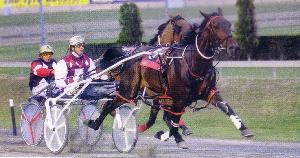 |
| Spero Denario takes Dexter's tally to 100 for the season |
Dexter Dunn achieved yet another record at Addington last Friday night.
It wasn't the five wins he had on the 11-race card, nor the fact that four of them were in a row, and he's not the first driver to win back-to-back Premier Mare's Championships either.
No, the latest milestone that harness racing's whiz kid added to his burgeoning CV was for reaching 100 wins in a season in the quickest time: 174 days to be exact, 24 less than the previous record of Maurice McKendry's set in 1988/89. Remarkably, Dunn wasn't even born at the time - he came into the world about seven and a half months later. Dunn had been 'knocking' at this record for a while, driving his 100th winner one day too late two seasons ago and over-shooting the cut-off by nearly a fortnight last term.
But he was always looking likely to claim it this time round, because there was no brief stint across the Tasman in August for the likes of the Breeders' Crown so he was here and chipping away at the target much sooner. "I never set out to break records," Dunn says,"if it happens, it happens."
The fact is that he just does though, and after a rollicking start and a plethora of winners it's looking likely that he could top the 200 mark again in 2010/11. He'll be away overseas for most of July when he represents New Zealand at the World Driving Championships, but at his current rate he'll probably have put the double-tonne behind him before he hops on the plane.
In fact, the only records really left for Dunn to break now are his own ones.
Credit: John Robinson writing in HRWeekly 26Jan11
YEAR: 2011
PEOPLE
DUAL GAITED TRAINERS
It seem slightly traitorous to some that high profile harness trainers are casting their eyes over the thoroughbred industry to extent their interests.
The way the gallops are going, you would have to wonder why? But when people of the calibre of Barry Purdon and Natalie Rasmussen announce they are increasing their commitment to the galloping code, and supporting acts like Todd Mitchell and Brian Court have already taken the plunge, it seems a trend in the making. If so, it is one old enough to have grey hairs.
A century ago, one of New Zealand's leading harness trainers was the Palmerston North-based Lou Robertson, a superb horseman though inclined to test the patience of officialdom with some of his adventures. He left New Zealand for Australia when bookmakers were banned here (1910); became a top harness trainer in Melbourne, but switched to gallopers at the request of his owners. He won the 1915 Caulfield Cup (and again as late as 1949) and after that trained several turf stars until the remarkable year of 1935 when he won the Cox Plate, the Melbourne Cup, the VRC Derby and the VRC Oaks in a matter of weeks. Lou was ludicrously superstitious but never regretted his journey to the 'dark side' from harness.
Dave Price of the same era was the man who spied the freak pacing mare Princess on the road to Ashburton in the 1880s and turned her into a goldmine on both sides of the Tasman. When he was disqualified for life for pulling Princess in Australia he toured in a circus with her doing riding tricks. He developed our first genuine Addington superstar, Ribbonwood, and travelled to America to buy the famous foundation mare, Norice.
The banning of bookmakers hastened Price's permanent exit to Australia when he switched to thoroughbreds in Sydney in 1922. His list of top horses would fill this column. He was famous enough to have his racing memoirs published in a series in a top Sydney newspaper - and he had plenty of stories to tell, especially about his New Zealand career.
In the 1920s an Australian trainer, Peter Riddle, set up a trotting stable in Domain Terrace at Addington and soon had remarkable success. He returned home, took up with gallopers, and owned and trained a fabulous horse called Shannon which later set world records in America.
Bill Tomkinson (for his son Jim), Ces Donald, and Jimmy Bryce (for his daughter Rona) were among prominent trainers of the 1930s to have gallopers (at least ones which were supposed to do that), while that remarkable horseman 'Dil' Edwards was winning the best races at Addington and top races at Riccarton at the same time from his Yaldhurst stable.
Jack Shaw was a famous dual-gaited trainer, having the champion trotting mare of the 1930s in Worthy Queen and the champion galloper of the 1950s in Beaumaris. Claude Fairman, who trained the famous pacing mare, Blue Mist, used to help out with Shaw's gallopers. Lately of course, Graeme Rogerson has been trying a similar change in reverse - as Freeman Holmes did more than 100 years ago.
Graeme has found it a challenge, as is any training enterprise, but is a hard man to beat. History suggests Barry, Natalie and company will be well up to the task doing it the other way round.
Credit: David McCarthy writing in HRWeekly 26Jan11
YEAR: 2011
PEOPLE
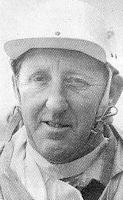 |
There was standing room only om Monday at the funeral service for harness racing identity Henry Skinner who died in Invercargill on June 20, aged 78. He was described in the many tributes as a no fuss horseman with great judgement and practical skills. This was backed by his results.
In a driving career spanning 45 years, from his first drive in the 1956-57 season to his last in the 2000-01 term, Skinner reined the winners of 717 races. Among his major successes were the 1979 Auckland Cup with Sapling, the New Zealand Messenger Stakes in 1976 and 1978 with Forto Prontezza and Sapling, the 1989 New Zealand 2-Year-Old Championship with Honkin Vision and the 1989 Dominion Handicap with Tobago.
He also suffered some near misses suc as when Hi Foyle came up against Young Quinn in the 1975 Inter-Dominion Final, or when Sapling was nutted in both the 1978 New Zealand Cup and the Inter-Dominion Final, or when No Return got clear too late in the 1993 New Zealand Derby. In addition to those second placings in major races, he came close in another New Zealand Cup when Forto Prontezza, a pacer he also trained, came third.
Prior to his entry into harness racing, Skinner had been an apprentice jockey and won his first race at Tapanui in 1948 as a 15-year-old. Among his key wins were the 1949 Invercargill Gold Cup on Gunther, carrying seven stone seven pounds (47.75 kgs) and consecutive Great Western Steeplchases aboard The Denbigh in 1951 and 1952, the latest carrying 11 stone one pound (70.5 kgs). Not long after that, increasing weight led to him swapping saddles for sulkies.
Although it took him 12 seasons to reach his first 100 winners, those were in days when harness racing dates in the south were limited, as were the number of races each day. He topped 30 in a season for the first time with 38 wins in the 1973-74 term and another eight times later. His best tally, of 39, came in 1986-87.
Skinner's solo training career began in 1960 but he netted just the on win in his first term. By the time it ended in 2007, his tally was 327 wins. In addition, a successful five-term partnership with Allan Devery - from 1987 - yielded another 76 wins. Honkin Vision, who won both the 1989 2-year-old Sires' Stakes Final and the 3-year-old version six months later, was their biggest winner.
Skinner was carried into the service to the 1965 Herman's Hermits hit 'I'm Henery the Eigth, I Am' and his daughter Tracey Laker recalled the times he would ring and sing the song down the phone line to her to report on a successful day at the races. She also remembered going to races with him in the days when parking attendants were required, and spoke of the lack of success the white coated brigade had when trying to change her father's parking habits.
Peter Davis, who worked for him for about six years, spoke of the ongoing Skinner influence. Some of the routines he followed, such as when mouthing, Davis said, have stuck with him to this day.
Skinner's casket was draped with the red and white colours he wore so prominently for many years. He is survived by two daughters, Tracey, and Vicky Popham, and five grand-children Morgan, Nic, Georgia, Meg and Flynn.
Credit: Mac Henry writing in HRWeekly 29Jun11
YEAR: 2011
PEOPLE
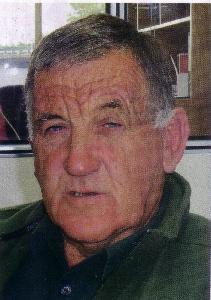 |
The February 1 launch of the new Racing Integrity Unit coincides with the first day of retirement for Neill Escott. Harness Racing's First Man of Integrity has his last day as Chief Stipendiary Steward at the Oamaru meeting on Sunday week. He spoke of 37 years as a stipendiary steward with Weekly Editor, Mike Grainger.
STARTING OUT
"I was looking for a change of lifestyle. At the time I was working as a Stock and Station Agent. I had two young kids and I was leaving home before they were up and getting home when they'd gone to bed. I saw that the NZ Trotting Conference, as it was then, was advertising two positions and one was for a Trainee Stipendiary Steward. I went through a series of interviews and got the job.
I came under the wing of L.A. Butterfield, and the other full-time stipe in Christchurch at the time was Les Purvis. Our deputies were Doug Watts, Laurie Mahoney and Errol Williams. I was very fortunate starting off with Butterfield, who carted me everywhere. He told me to sit in a corner, say nothing, and keep my ears and eyes open. He was very experienced, confident and he would administer justice fairly. It was important to have the ability to read a race. You either had it, or you didn't. Fortunately, I had it. There were a number of things that gave you that confidence, and knowing the the colours was just one of them. When I started, race filming was just in it's infancy, and Roy Kennard was in the process of refining it and taking it to where it is today.
STEWARDS THEN
After L.A. Butterfield came Harry Fryer, who was Senior Stipendiary Steward, and then Peter Mackenzie took over. I did a lot of meetings in Southland with Peter, and I had no trouble with him. He could be arrogant, I know, and I know many did not see eye to eye with him, but he did have a heart. He was an excellent race-reader and a good steward, and he loved his golf and squash, and he did so much work establishing the Gore squash courts that the building was named after him.
Michael Carrigg came next - a Queenslander from Rockhampton. It was obvious that those who made this decision did not think there was anyone here capable of handling those duties. At the time I was not considered suitable for the position. You have to take those things on the chin, but it's fair to say I was disappointed I was not appointed then. I took over after he died.
STEWARDS NOW
We are so fortunate today that we have a growing number of stewards who have been out on the track and have that experience. It's something like 'employ a thief to catch a thief'. It's harder with filming for anyone to beat the system, but you get to know by body language if someone is telling porkies or being on target with the truth. But even with the film, there are people who throw up a smokescreen for the JCA, and put up too many excuses.
CHANGES
Raceday filming and laptops. I recall when all reports were hand-written. The employment of former licenceholders who have on-track experience has been a new and successful change. Clubs giving junior drivers increased opportunities has been a great step forward forward and the standard of race driving - with the exception of amateurs - has improved dramatically. There are no longer many charges that come under the serious category, and that's a result of more trials and workouts as well as racemeetings.
On the demerit side, I still think the JCA is a big expense for clubs and needs fine-tuning. I don't agree with the JCA taking the line of asking a driver or trainer if they are in a position to pay a fine. The penalty should fit the offence and there should be no choice. You don't get asked what you'd like if you get a traffic notice, so why here? I also think it's wrong there can be no appeal on raceday placings. There should be an avenue by which aggrieved owners can appeal those decisions.
FIASCOS
Well, the worst day of my life, ever, was at Methven. Everyone remembers it.
To start with, there was a power failure early in the day. It meant that there was no payout of winning tickets that had been sold. So the meeting was put back 10 minutes. The club's Tote Steward then decided to go to lunch without telling anyone and he hadn't passed this information on to the Starter. I was in the room when I heard Reon Murtha on the speaker saying the Starter was bringing them into line. This would have been the fourth race. I went out to see what was going on. And before I could do anything, they were off. I thought the best thing to do would be to go out on the track and stay close to the gate and wave the drivers down...bring them in like Pied Piper and they'd all follow... Some stopped, some didn't. Of course, the tote was still open, and wasn't closed until they were halfway home. After that it rained...poured down. One fiasco after another. They decided to rerun the race after the last. I think eight went round again. (For the record: the T.S. Harrison-Nevele R Three-Year-Old Stakes was won by Beaudiene Bolta - John Hay - from Megatrend and All The Rage. Eight started after 12 were scratched, including the original winner, Twilight Time).
I got home feeling gutted. Mackenzie was down south and phoned and asked what was going on. But the first to call was the galloping stipe Bruce Craik who offered his commiserations, and then a few weeks later much the same thing happened to him. And just to keep the wound open, I started getting some odd presents in the mail box...white gloves, stop signs and loud hailers...good fun.
One inguiry that still disturbs me was the Hoppy's Jet one at Oamaru. The horse was just beaten on the first day after coming with a late run. Michael De Filippi drove him as he always did, and that's how it suited the horse. After viewing replays of the race, the committee of the day did not lay charges. On the second day, the horse was in a race for junior drivers, and he went straight to the front for Paul Hampton and won. I had strong support for the decision I had taken, and I'd been told action by some trainers and drivers would be considered if the matter went further. I had always been against clubs having penalty-free races for junior drivers on the second day of a meeting, and soon after that change was made.
We were at Nelson for one meeting, when Dennis O'Reilly asked where Make To Royce was. The horses had left the birdcage and were round at the start, and just about to come into line. Carrigg asked me what we should do, and I said use the common-sense rule - scratch it. It was plain to see the horse wasn't there. Then Ian Cameron came up the shute with the horse, saw what was happening, then turned around and went back. It was a bit embarrassing, being owned by an Executive member, as it was.
On another occasion, I was at Wesport and Roy Craddock was the Starter and he was having a hard job getting Tufty Boy to line up. He was rearing and plunging and needed an oxygen mask each time he came up for air. Craddock then called out if anyone had a rope. A rope was duly presented and four big men pulled the horse into line. When they left, Tufty Boy took the rope with him, and it dragged behind him for the entire race.
Another Coast incident was at Reefton when the Starter saw the balloon go up, and saw it come down and let the horses go. The balloon was a kerosene drum full of concrete. What happened was the rope that took the drum up broke, crashed and broke a chap's collar bone. It could have been worse.
MEMORABLE PERFORMANCES
Final Decision in the New Zealand Cup and Lord Module in the Matson will go down in history as two of the greatest efforts we've seen. Steel Jaw's huge win in the NZ Cup and then the death of his owner in the birdcage after the race was memorable. Two of the best trotters I've seen were No Response and Nigel Craig and of the modern-day horses, Monkey King. And I'd have to mention the time trial by Mount Eden at Addington after Charlie Anderson had to grade the track after the last race. So much has changed. Years ago, you wouldn't see a 2-year-old until the Sapling Stakes in June, and now there are four or five 2-year-old heats at many of the trial meetings. Just recently, I think we inspected eight 2-year-olds ond day just from one stable."
Escott, a man of 100 cliches, said he retired thankful of the assistance and help of the majority of clubs and licenceholders. He served under 10 Board Chairmen - Dick Rolfe, Dewar Robertshaw, George Cruickshank, Sir James Barnes, Jack Phillips, Max Bowden, Ralph Kermode, Jim Wakefield, John Penney and Pat O'Brien and four General Managers - John Rowley, Ian Mill, Mark Todd and Edward Rennell. "I always admired Jack Phillips. He'd always speak to the staff...very human, down to earth...never changed.
If I had one wish it would be to see a common approach to rules and regulations between New Zealand and Australia. I participate in the annual meeting of stipendiary stewards between the two countries and everyone wants to do their own thing. If there was more consistency, people would know where they stand. It's not like that now. Probably the highlight of my career is when I've been given the opportunity to put my views, on behalf of the New Zealand industry, to the Annual Meeting of Chief Stipendiary Stewards in Australia. But to get changes is like pushing rope uphill."
Credit: Mike Grainger writing in HRWeekly 19 Jan 2011
YEAR: 2011
PEOPLE
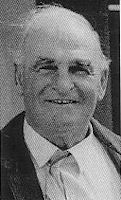 |
Trail-blazing trainer Alex Milne, considered an expert with young horses, died in Gore, aged 90.
On Boxing Day, 1974, he produced Parlez Vous at Ashburton to beat the champion Noodlum, the first horse to do so. Six days later, at Addington on New Year's Day, he did it again. The race was the E F Mercer Flying Mile and he became the first three-year-old to clock a race winning time of 2.00 (in NZ). Race driver Alex Milne junior recalled it was Parlez Vous's fifth win in a row. Nine months earlier, Parlez Vous had won the New Zealand Kindergarten Stakes with Henry Skinner in the sulky.
In 1978, Matai Dreamer - driven by Milne junior - won the same race after breaking early and giving the field a massive start. Matai Dreamer and then Armbro Wings won Great Northern Derbies in 1979 and 1980. New Zealand 3YO of the Year, Matai Dreamer was named by Milne junior as probably the best of his late father's many winners.
In 1977, Milne had prepared Almac to win the Kindergarten Stakes, prior to selling him to Australia. According to Milne junior however, the Australians came early, paid for him and wanted their own driver, Eddie Sim, to take the reins. "The Australians brought their own hopples. It was the first time we'd seen shorteners, but when they measured them against the ones he had been wearing they couldn't get them long enough. They went ahead and used them, he ran third." Almac was renamed Black Irish in Australia and went on to have a distinguished career including victory in the Queensland Derby.
Milne junior said that when his father weaned, he kept the foals in all winter, mouthed them and drove then in a sulky as weanlings. "He said that if you get them doing work, they'll eat better. He didn't put them in a sulky very much, he seemed to know just how often to do it."
Milne also had then driven differently on raceday. "When I started driving, you used to sprint early, back off and then sprint home," Milne junior said. "When Dad took young horses to Canterbury his way was to make a mid-race move and at the 800m, put the pressure on to take the sprint out of them. They were conditioned to do that."
One of a family of nine, Milne's mother died when he was four and his father when he was 14. He was brought up by locals in the community and became a cheese maker at the local dairy factory. Another chapter in his life saw him take a team of horses to Walter Peak Station on the banks of Lake Wakatipu where he ploughed over 200 acres of land. It is believed the exercise took about two years and was instrumental in developing his equine expertise.
Married before the war, Milne returned from service in 1947 and immediately went sheep farming near Edendale. He had a family of four daughters and three sons. One of them, Ewen Milne, now of Christchurch, drove and trained for a time while Alex Milne junior continues to do both at Edendale. Grandson Nigel drives successfully in Australia. Such were the demands of farm and family that Milne was in his 40s before he took up training. Cover On was his first winner. He later took it to Wellington to race and then sell.
In the 1964-65 season he ha five wins, four of them with Van Patch who was the first of a significant number of winners who secured four or winners for him. Inclded were Matai Chip, Matai Blue Chip, Matai Bret, Monarque, Maai Moon Beam, Matai Gogi, Matai Skipper and Arden Bay (runner up in the New Zealand Derby). Another was Watbro who started in the New Zealand Cup, led up but was run down.
Camsplace Alec, the winner of two as a juvenile (1996-97 season), five at three and four at four, was the last winner trained by Milne. Raced by him in partnership with Balfour studmaster Allen Jones, Camsplace Alec was then transfered to Brian Hancock in New South Wales and won another 33 times. Matai BBC (Nevele R Series heat winner, 17wins in Australia) and Matai Princess (Southland Oaks heat winner) were the last horses he raced. The 1978-79 season, with 23 wins, was Milne's best and he was Southland's leading trainer that year.
Credit: Mac Henry writing in HRWeekly 3Aud2011
| << PREVIOUS | 1 2 3 4 5 6 7 8 9 10 11 12 13 14 15 16 17 18 19 20 21 22 23 | NEXT >> |